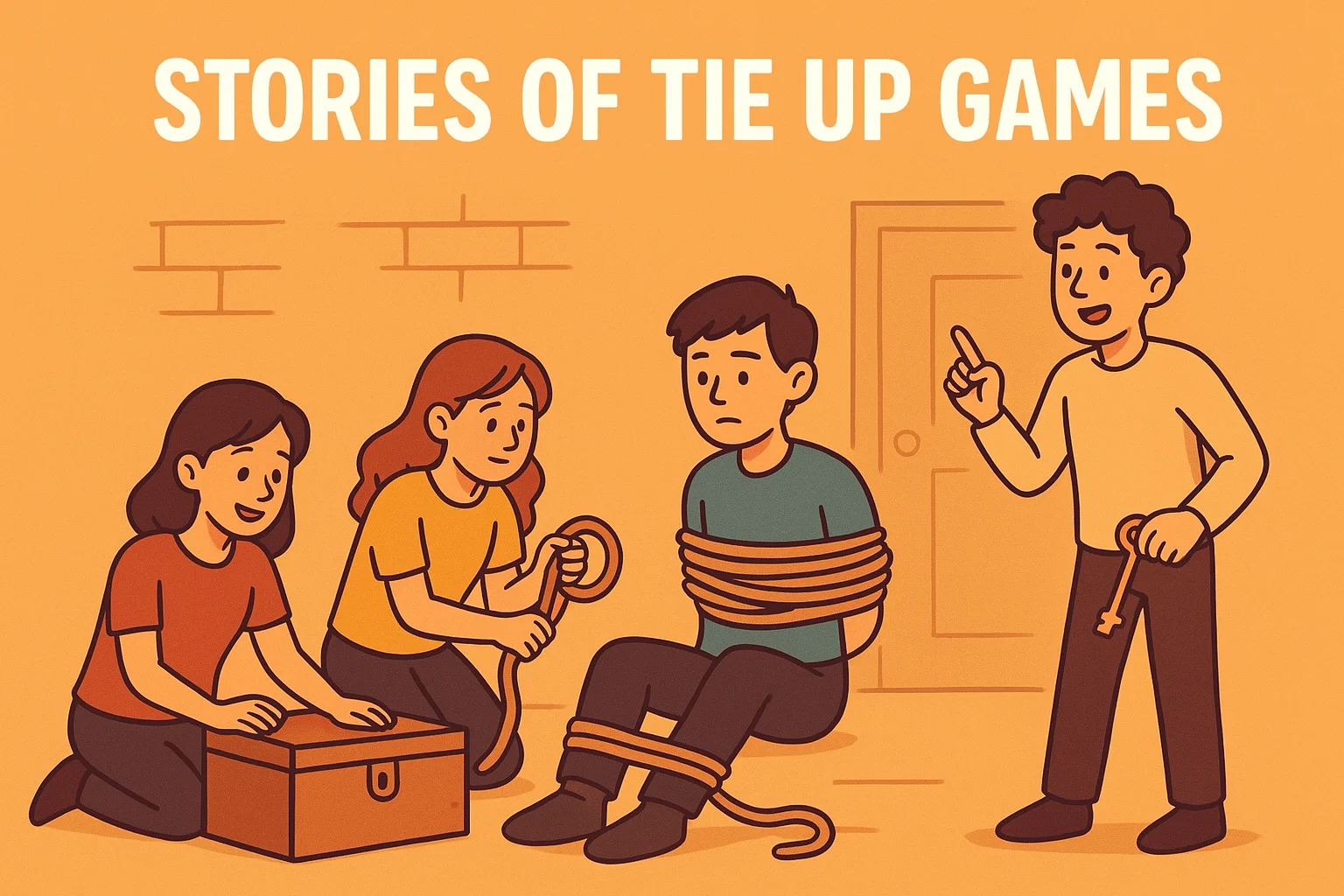Introduction
When you first come across the phrase stories of tie up games, it might sound unusual or even puzzling. Yet, this niche has a dedicated following online, where people share creative stories about playful restraint, escape challenges, and role-based adventures. These stories are not just about ropes and knots; they are about imagination, suspense, and community-driven storytelling. By exploring them, we can see how a simple idea grew into a fascinating form of online fiction.
What Are Stories of Tie Up Games?
At the core, stories of tie up games are fictional narratives where restraint or escape challenges become part of the storyline. They often feature captor-versus-captive roles, playful dares, or puzzle-solving situations. Unlike traditional adventure stories, these tales highlight suspense around time limits, clever escapes, and teamwork.
Some communities treat them like role-playing adventures, where readers and writers collaborate to create thrilling scenarios. Others view them as a form of escapology-inspired fiction, where characters must break free from restraints or solve puzzles before time runs out.
The Origins of Tie Up Games in Fiction and Culture
Early Inspirations from Escapology and Houdini
One of the biggest influences on stories of tie up games is escapology—the art of escaping restraints. Performers like Harry Houdini amazed audiences with daring stunts involving ropes, handcuffs, and locked boxes. This idea of suspense, danger, and last-minute escapes shaped much of the fiction that came later.
How Adventure Tropes Influenced Tie Up Storytelling
Classic adventure tales often included “captured hero” or “escape challenge” moments. These tropes found new life in modern online storytelling communities, where writers expanded them into full narratives rather than short scenes.
Transition from Stage Acts to Online Fiction Communities
As the internet grew, niche forums and story-sharing sites began to host writers who focused on restraint-themed fiction. Here, stories of tie up games evolved from stage-inspired scenes into collaborative adventures where creativity and consent played central roles.
Common Themes in Stories of Tie Up Games
Escape Challenges and Dares
Many stories revolve around timed challenges. Characters might be tied up and told they must escape within an hour, using only objects nearby.
Role-Swap and Captor vs. Captive Scenarios
A playful swap between roles is common. The captive today may become tomorrow’s captor, creating ongoing tension and balance.
Puzzle, Mystery, and Time-Limit Elements
These stories often include hidden keys, tricky knots, or riddles that must be solved before time runs out.
Lighthearted vs. Dramatic Storytelling Styles
Some writers keep the tone fun and humorous, while others lean into suspense or mystery, making the escape feel more urgent.
Why People Enjoy Stories of Tie Up Games
The appeal of stories of tie up games lies in the thrill of suspense without real danger. Readers enjoy watching characters test their creativity, teamwork, and determination. Writers find joy in building puzzles, setting rules, and crafting clever escapes.
It also appeals to the imagination. People can place themselves in the shoes of both the captor and the captive, exploring different perspectives and strategies. For many, it’s simply a safe and entertaining way to explore “what if” scenarios.
Online Communities and Story Sharing
Forums Dedicated to Tie Up Game Fiction
Several online forums are dedicated to this niche. Members post stories, give feedback, and collaborate on plot ideas.
How Writers Tag, Share, and Exchange Ideas
Stories are usually tagged for themes such as “escape,” “role swap,” or “time limit.” This makes it easier for readers to find what interests them most.
Community Guidelines and Rules for Safe Participation
Most communities enforce strict rules. They require content warnings, ensure stories focus on consensual themes, and ban any depictions involving minors. This helps keep the creative space safe and enjoyable for everyone.
Safety, Consent, and Ethical Storytelling
Importance of Consent in Fictional Scenarios
Even in fiction, communities emphasize the importance of consent. Writers make it clear that characters agree to participate in games or challenges.
Frameworks like SSC, RACK, and 4Cs
These frameworks—Safe, Sane, Consensual (SSC), Risk-Aware Consensual Kink (RACK), and Caring, Communication, Consent, Caution (4Cs)—guide ethical writing and role-play practices. They remind storytellers that while creativity is encouraged, respect and responsibility come first.
Clear Tagging and Content Warnings for Readers
To protect readers, communities ask writers to provide detailed content tags. This way, readers can choose what they want to engage with and avoid unwanted surprises.
Differences Between Tie Up Game Stories and Other Uses of “Tie-Up”
Tie-In or Crossover Games (Brand Collaborations)
Sometimes the word “tie-up” is used in gaming to describe brand collaborations, like crossover video games. These are entirely different from stories of tie up games.
Escape Rooms and Puzzle Challenges
Escape rooms share similarities, but they usually don’t involve restraint. Instead, they emphasize puzzles and teamwork under time pressure.
Clarifying Misconceptions Around the Term
By distinguishing between these meanings, we can better understand how “tie up games” in storytelling is its own unique category.
Tips for Writing or Reading Stories of Tie Up Games
- Start with simple plots: Create scenarios like “escape before time runs out.”
- Build strong characters: Make both captors and captives interesting, with clear motives.
- Use suspense wisely: Balance fun with tension to keep readers hooked.
- Respect community rules: Always follow consent and safety guidelines.
The Future of Stories of Tie Up Games
As online communities grow, the popularity of niche storytelling continues to expand. Interactive fiction, role-play platforms, and even VR could give stories of tie up games new forms in the future. With their mix of suspense, puzzle-solving, and creativity, they are likely to remain a unique storytelling tradition for years to come.
Conclusion
In summary, stories of tie up games are a fascinating blend of adventure, suspense, and community-driven creativity. Inspired by escapology and adventure tropes, they have evolved into a safe and imaginative space for writers and readers. With strong community rules, focus on consent, and endless room for creativity, these stories continue to thrive online. They prove that even the simplest idea—tying and escaping—can unlock endless storytelling possibilities.


